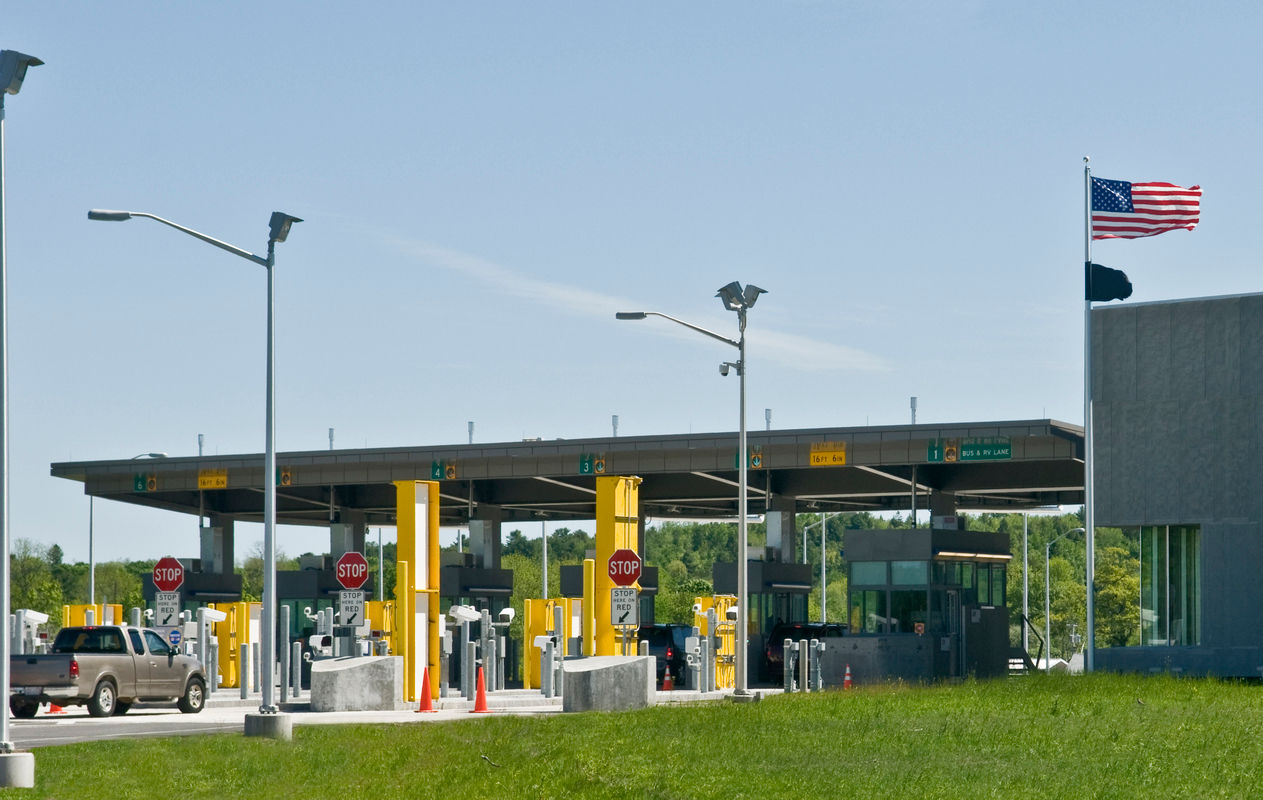
July 15, 2022
Early Closing - Tracking Peak Season Trade Patterns
Early Closing - Tracking Peak Season Trade Patterns

When is the peak shipping season for the retail industry? What does that require in terms of inventory and logistics timing? Will 2022 be different from previous years? The U.S. consumer retail sales season peaked in November and December in the 2010-2019 period. That required peak inventories in October and November while ocean freight imports peak in August through October, airfreight in November. Logistics and supply chain disruptions in 2022 may mean that ocean shipping for peak season retail sales may need to happen much earlier than in prior years.
Introduction - What’s in a Peak?
Economic activity does not grow monotonically. In addition to expansion and contraction, some industries and goods show strong seasonality. The height of the seasonal activity is referred to as peak season, with the timing depending on industry and geography. Some peak seasons are well defined and anchored to a specific point in time, like fireworks as discussed in Flexport’s prior research, while certain industrial goods show fewer seasonal effects.
Seasonality can also shift in both phase and amplitude—something we’re seeing now with the shipping industry. Seasonality also varies across supply chains, with the requirement for an earlier peak in ocean shipping to meet a later peak in inventories to support the final peak in retail sales.
Each section of this report looks at a different element of the supply chain. We work backwards from retail sales and give a description of the seasonality of products through inventories and the ocean and air freight that supports them. We then wrap up by bringing all four together.
In contrast to our normal economic analysis, we will focus on non-seasonally adjusted data on a detrended basis so the we do not remove the seasonal effects that interest us. We also make extensive use of seasonality charts which rebase the data for each year to the January level. We specifically take averages across the 2010-2019 period as a baseline before reviewing what happened in 2020 and 2021.
U.S. Retail Sales Peak in Early Fall and Mid-Winter
A major driver of seasonality in U.S. supply chains stems from retail sales excluding food, gasoline, and automotive products. Throughout the analysis we use non-seasonal data on a detrended basis to better observe patterns during each year.

Figure 1—and others like it in this report—uses a baseline of 100 for January in each year for each datapoint, then takes the average for each month (e.g., March 2010, March 2011, March 2012 etc.) to create a notion of “average seasonality” in the 2010 to 2019 period.
The chart shows that retail sales have their major peak in November and December, linked to purchases for holiday gift giving. There is also a secondary, but smaller, bump in July and August linked to back-to-school purchases of selected items.

Figure 2 provides more details for the October-to-December period (clusters), segmented by decade (colors). The degree of divergence of each of the months from the January baseline, represented by the height of the bars, fell in the 2000s vs. the 1990s and in the 2010s vs the 2000s.
That reversed markedly in 2020, which may reflect reduced sales earlier in the year linked to the COVID-19 pandemic’s closure of many stores.
There was a further increase in the importance of October and November sales in 2021, which may reflect earlier shopping by customers keen to avoid ongoing shortages of many gift items.

The stakes in delivering successfully into peak seasons are higher for some industries than others. Figure 3 is ordered by the ratio of sales in December versus January from highest to lowest. Throughout the chart, green represents a higher figure (i.e. a seasonal peak or near-peak) and red a lower figure (i.e. an off-peak season).
It shows that the most seasonal sector is toy and gift stores in that they have the highest December peak. Sporting goods and clothing stores also appear to have gift buying characteristics while Department stores may have historically benefited from browsing shopping.
Other sectors have peaks elsewhere in the year. The back-to-school shopping season in August marks a peak for footwear, office supplies, and book stores. Seasonal home maintenance boosts sales for hardware and building materials stores in May and June, while paint stores do best in the summer months.
Inventories Peak in October to November
Retail inventories peak ahead of sales—after all, it can’t be sold if it’s not in stock. In the 2010-2019 period inventories peaked in October and November after ramping up in September.

As shown in Figure 4 above, 2020 and 2021 maintained the historic shape of seasonality with more extreme divergences throughout the year. In the case of 2020, there was a lower-than-usual off-peak season drop linked to factory closures and other COVID-19 disruptions. In 2021, there is some evidence of a heavier ramp-up before peak season which may indicate retailers' desire to avoid prior shortages.

Although the granularity available in inventory data is somewhat less than that for sales, department stores and general merchandise stores saw markedly higher trough-to-peak structure of inventories compared to the historic average. As shown in Figure 5, that spread was even more marked in 2021, perhaps as stores sought to deal with an anticipated return to in-person peak season shopping.
Ocean Imports Peak in August to October
Before entering inventories, of course, imported goods have to make extensive oceanic or air journeys. The analysis that follows analyzes bill-of-lading data collated and classified by S&P Global Panjiva.

Figure 6 shows that the seasonality in total U.S. seaborne imports of containerized freight is shallow in aggregate due to handling of industrial goods which have minimal seasonality. There is a clearer trough-and-peak pattern for consumer goods which reach their peak in September with elevated levels in August and October.

The picture in recent years has drifted away from the 2010-2018 period. In 2019, the pattern was likely distorted by the application of Section 301 duties on imports from China. In 2020, the deeper off-peak was due to the impact of factory and store closures linked to the COVID-19 pandemic, as indicated in Figure 7. In 2021, the flatter-than-normal pattern—effectively with no off-peak season—likely reflects supply chain bottlenecks exacerbated by longer shipping times.
In 2022, there are challenges for shipments of highly seasonal products such as toys, decorations, and winter apparel due to elevated shipping times previously mentioned. While there have been improvements in recent months, the average overall time was still 95 days in total (cargo ready to destination port departure) as of early July compared to 85 days in 2021, 50 days in 2020, and 47 days in 2019.
Air Freight Imports Peak in October to November
Air freight offers significantly shorter delivery times than ocean making the peak season for air shipping much later. Flexport’s Airfreight Timeliness Indicator shows TPEB shipping takes around 11 days from collection to delivery, up from seven days in 2019.
The overall seasonality for airfreight is somewhat lower than sea freight due to the importance of pharmaceutical and aerospace industries.
There has been an increase in the use of air freight by the electricals and electronics sectors with growth in 2021 versus 2021 of 31% year over year (based on S&P Global Panjiva and U.S. Census Bureau data). That may reflect the need to fill product availability gaps due to increased time needed for ocean freight. By contrast, pharmaceutical usage rose by just 3% and aerospace products dropped by 34%.

Figure 8 shows electronics and electricals industries air freight shipments peak in November in the 2010-2019 period with an earlier run up in 2020 and 2021. This earlier peak perhaps reflects the aforementioned redirection of ocean freight. There is also a small variation of the peak depending on the release cycles of key consumer electronics including PCs and phones.
In Conclusion - Seasonality on the Move
To conclude, we can bring the four elements of seasonality identified in the report into one place.

Figure 9 shows the average seasonality across four different stages of supply chains with sales, inventories, ocean shipping, and air freight.
Each component shows distinct seasonality in the period between 2010 and 2019. We see retail sales peak in December, inventories and airfreight in November, and ocean freight in September.
Subsequently, there have been a series of distortions to normal seasonality, including the pandemic in 2020 and logistics bottlenecks in 2021. In 2022, there may be challenges for shipments of highly seasonal products like toys, decorations, and winter apparel.
Unless timing continues its improvement and bucks the seasonal trend, November ocean freight departures from Asia may need to leave much earlier than in prior years to cover the peak shopping season.
Disclaimer: The contents of this report are made available for informational purposes only and should not be relied upon for any legal, business, or financial decisions. Flexport does not guarantee, represent, or warrant any of the contents of this report because they are based on our current beliefs, expectations, and assumptions, about which there can be no assurance due to various anticipated and unanticipated events that may occur. This report has been prepared to the best of our knowledge and research; however, the information presented herein may not reflect the most current regulatory or industry developments. Neither Flexport nor its advisors or affiliates shall be liable for any losses that arise in any way due to the reliance on the contents contained in this report.
About the Author





